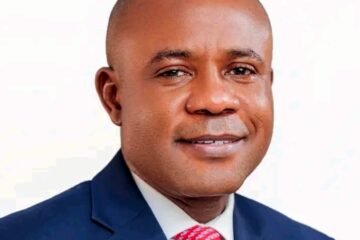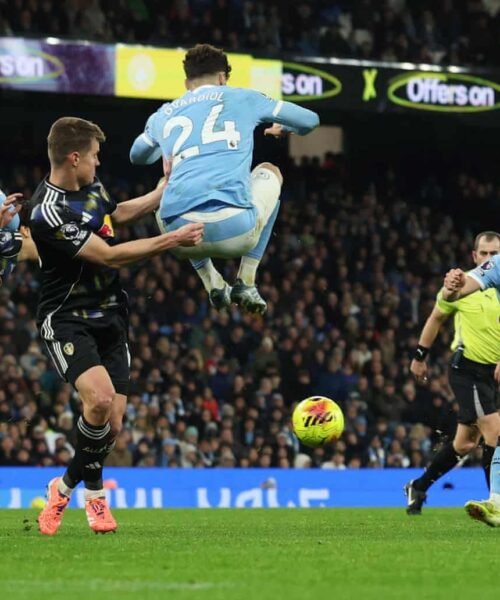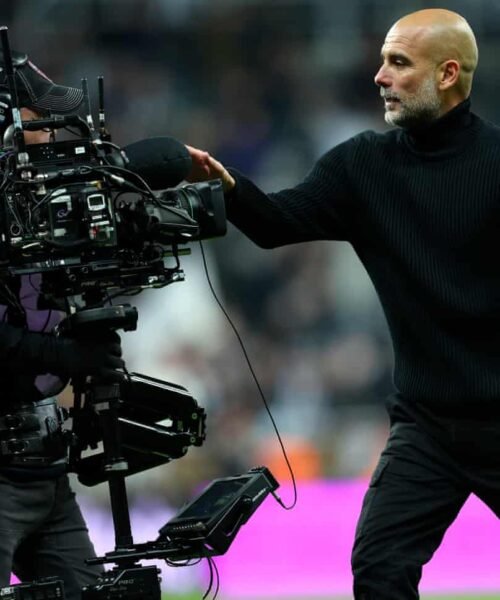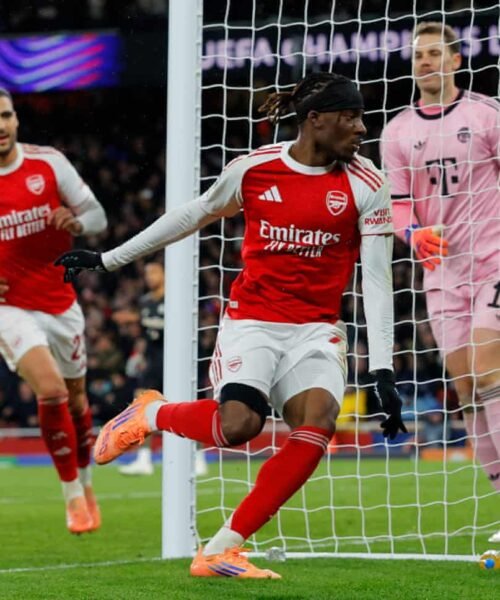Former world heavyweight boxing champion George Foreman died on Friday, March 21, at 76 after a decorated career as an athlete, pastor and businessman.
In a statement on Saturday morning, March 22, Foreman’s family wrote on Instagram that the boxing legend had died “surrounded by his loved ones” the night before.
“A devout preacher, a devoted husband, a loving father and a proud grand- and great-grandfather, he lived a life marked by unwavering faith, humility and purpose,” his family wrote.
“A humanitarian, an Olympian and two-time heavyweight champion of the world, he was deeply respected. A force for good, a man of discipline, conviction, and a protector of his legacy, fighting tirelessly to preserve his good name – for his family.”
Born in Marshall, Texas, in 1949, Foreman’s family moved to Houston, where he grew up poor in the segregated south and dropped out of junior high school, using his size and strength in street robberies.
At 16, Foreman was encouraged to channel his rage and stature into boxing after joining the Job Corps, which was part of then United States President Lyndon B Johnson’s “Great Society” reforms.
By 19, in his 25th amateur fight, Foreman had won the heavyweight boxing gold medal at the 1968 Olympics in Mexico City.
Following his win, Foreman went pro and won his first world heavyweight championship in 1973 against reigning champion Joe Frazier.
However, his success was short-lived after he lost his first title to Muhammad Ali in their famous “Rumble in the Jungle” fight in 1974.
But the loss devastated Foreman, who took a year off before returning to the ring and then, after another professional loss, retired in 1977 to become an ordained minister in the Church of the Lord Jesus Christ.
A decade later, Foreman returned to the ring to raise money for a youth centre he founded in Texas, where he won 24 straight matches before losing to Evander Holyfield in a 12-round decision in 1991.
Three years later, at age 45, Foreman knocked out the undefeated Michael Moorer, 19 years his junior, becoming the oldest-ever heavyweight champion.
In 1997, following Foreman’s last match, he ended his career with a professional record of 76 wins and five losses.
But outside of the ring, Foreman was best known as the face of the George Foreman Grill, which was launched in the same year he won against Moorer.
The cooking machine sold more than 100 million units, making him more money than his boxing career ever did.
Foreman is survived by his five sons, all named George, five biological daughters, and two adopted daughters.
What Is The Rumble In The Jungle ?
George Foreman vs. Muhammad Ali, billed as The Rumble in the Jungle, was a heavyweight championship boxing match on October 30, 1974, at the 20th of May Stadium (now Stade Tata Raphaël) in Kinshasa, Zaire (now Democratic Republic of the Congo), between undefeated and undisputed heavyweight champion George Foreman and Muhammad Ali.
It was the first ever world heavyweight boxing contest held in Africa. The then Zairean dictator Mobutu Sese Seko, a man with plenty of blood of his country men on his hands, seeking global publicity and Western endorsement for his regime, agreed to host the much-awaited matchup between the two top boxers on the planet.
Renowned American boxing promoter Don King, after meetings with Mobutu, convinced the latter that the presence of the world press for the fight in his country would lead to positive media projection of not only mineral-rich Zaire’s potentials for investors, but would launder the president’s international image and propagate another perspective to his poor human rights record. Mobutu bought into the idea.
Some sources estimate that the fight was watched by as many as one billion television viewers around the world, becoming the world’s most-watched live television broadcast at the time.
This included a record estimated 50 million viewers watching the fight on pay-per-view or closed-circuit theatre TV.
In Nigeria at that time, persons who had TV sets owned mostly black-and-white TVs with colour sets just beginning to be affordable by some of the middle class even as satellite transmission here was rare.
The fight grossed an estimated $100 million (inflation-adjusted $600 million) in worldwide revenue.
Decades later, the bout would be the subject of the Academy Award-winning documentary film When We Were Kings.
Don King arranged the fight with music businessman Jerry Masucci, who took his record label’s showcase group, the Fania All-Stars, to play at the venue.
King managed to get Ali and Foreman to sign separate contracts saying they would fight for him if he could get a $5 million purse.
Such an amount of money, quite enormous for those days, was purported to prevent other top boxing promoters from attempts to arrange a Foreman vs. Ali match.
However, as King did not have the money, and was not welcomed to stage an event of such a profile in the United States, he began seeking an outside country to stage and sponsor the event.
Fred Weymar, an American advisor to Mobutu, persuaded Mobutu that the publicity such a high-profile event would generate would help his regime, and Mobutu agreed for the fight to be held in his country.
In a TV interview, King stated that Libyan dictator Muammar Gaddafi was involved in making the payment for the purse money for the athletes and other major expenses, although the precise process was not made clear.
For Mobutu, it was – perhaps even more importantly – an opportunity to promote himself.
“A fight between two Blacks, in a Black nation, organized by Blacks and seen by the whole world; that is a victory for Mobutism,” posters around Kinshasa declared.
On the fight night, a large portrait of Mobutu hung above the two fighters, in the very stadium in which Mobutu had detained political prisoners.
Build-up and delay due to injury
In 1967, then- world champion Ali was stripped of his title and suspended from boxing for 3+1⁄2 years for his refusal to comply with the draft and enter the U.S. Army.
In 1970, he first regained a boxing license and promptly fought comeback fights against Jerry Quarry and Oscar Bonavena in an attempt to regain the heavyweight championship from the then-undefeated Joe Frazier.
In a bout dubbed the Fight of the Century, Frazier won a unanimous decision, leaving Ali fighting other contenders for years in an attempt at a new title shot.
Meanwhile, the heavily muscled Foreman had quickly risen from a gold-medal victory at the 1968 Olympics to the top ranks of the heavyweight division.
Greatly feared for his punching power, size, and sheer physical dominance, Foreman was nonetheless underestimated by Frazier and his promoters, and knocked the champion down six times in two rounds before the bout was stopped.
Foreman further solidified his hold over the heavyweight division by demolishing the only man besides Frazier at the time to defeat Ali, Ken Norton, in two rounds.
At 25, the younger and stronger Foreman seemed an overwhelming favorite against the well-worn 32-year-old Ali.
Foreman and Ali spent much of the middle of 1974 training in Zaire, getting acclimated to its tropical African climate.
The fight was originally set to happen on September 25 (September 24 in the United States due to the difference in time zones).
However, eight days prior, Foreman was cut above his right eye by an accidental elbow thrown by his sparring partner Bill McMurray in a sparring session.
Foreman’s cut required 11 stitches, and the date of the fight was pushed back five weeks to October 30.
How The Fight Went
Ali was famed for his speed and technical skills, while Foreman’s raw power was his greatest strength.
Defying convention, Ali began by attacking Foreman with disorienting right-hand leads. This was notable as it seemed that close-range fighting (technically known as fighting on the inside) would inevitably favor Foreman and leave too great a chance that Ali would be stunned by Foreman’s powerful haymakers.
Ali made use of the right-hand lead punch (striking with the right hand without setting up the left) in a further effort to disorient Foreman.
However, while this aggressive tactic may have surprised Foreman and allowed Ali to punch him several times in the head, it failed to significantly hurt him.
Before the end of the first round, Foreman began to catch up to Ali, landing punches of his own.
Foreman had been trained to cut off the ring and prevent escape. Ali realized that he would tire if Foreman could keep making one step to Ali’s two, so he changed tactics.
Ali had told his trainer, Angelo Dundee, and his fans that he had a secret plan for Foreman.
As the second round commenced, Ali began to lean on the ropes and cover up, letting Foreman punch him on the arms and body (a strategy Ali later dubbed the rope-a-dope).
As a result, Foreman spent his energy throwing punches (without earning points) that either did not hit Ali or were deflected in a way that made Foreman hitting Ali’s head difficult, while sapping Foreman’s strength due to the large number of punches he threw.
This loss of energy was key to Ali’s rope-a-dope tactic.
Meanwhile, Ali took every opportunity to shoot straight punches to Foreman’s face (which was soon visibly puffy).
When the two fighters were locked in clinches, Ali consistently out-wrestled Foreman, using tactics such as leaning on Foreman to make Foreman support Ali’s weight, and holding down Foreman’s head by pushing on his neck.
He constantly taunted Foreman in these clinches, telling him to throw more punches, and an enraged Foreman responded by doing just that.
After several rounds of this, Foreman began to tire.
His face became increasingly damaged by hard, fast jabs and crosses by Ali.
The effects were visible as Foreman was staggered by an Ali combination at the start of the fourth round, and again several times near the end of the fifth, after Foreman had seemed to dominate that round.
Although Foreman kept throwing punches and coming forward, after the fifth round, he looked increasingly worn out.
Ali continued to taunt him by saying, “They told me you could punch, George!” and “They told me you could punch as hard as Joe Louis.”
According to Foreman: “I thought he was just one more knockout victim until, about the seventh round, I hit him hard to the jaw and he held me and whispered in my ear: ‘That all you got, George?’ I realized that this ain’t what I thought it was.”
As the fight drew into the eighth round, Foreman’s punching and defense became ineffective as the strain of throwing so many wild shots took its toll.
Ali pounced as Foreman tried to pin Ali on the ropes, landing several right hooks over Foreman’s jab, followed by a five-punch combination, culminating in a left hook that brought Foreman’s head up into position and a hard right straight to the face that caused Foreman to stumble to the canvas.
Foreman rose to one knee but referee Zack Clayton signaled the end of the fight before Foreman got to his feet.
At the stoppage, Ali led on all three scorecards by 68–66, 70–67, and 69–66.
*Parts of this piece contain material from Wikipedia, independent research and other sources.


















